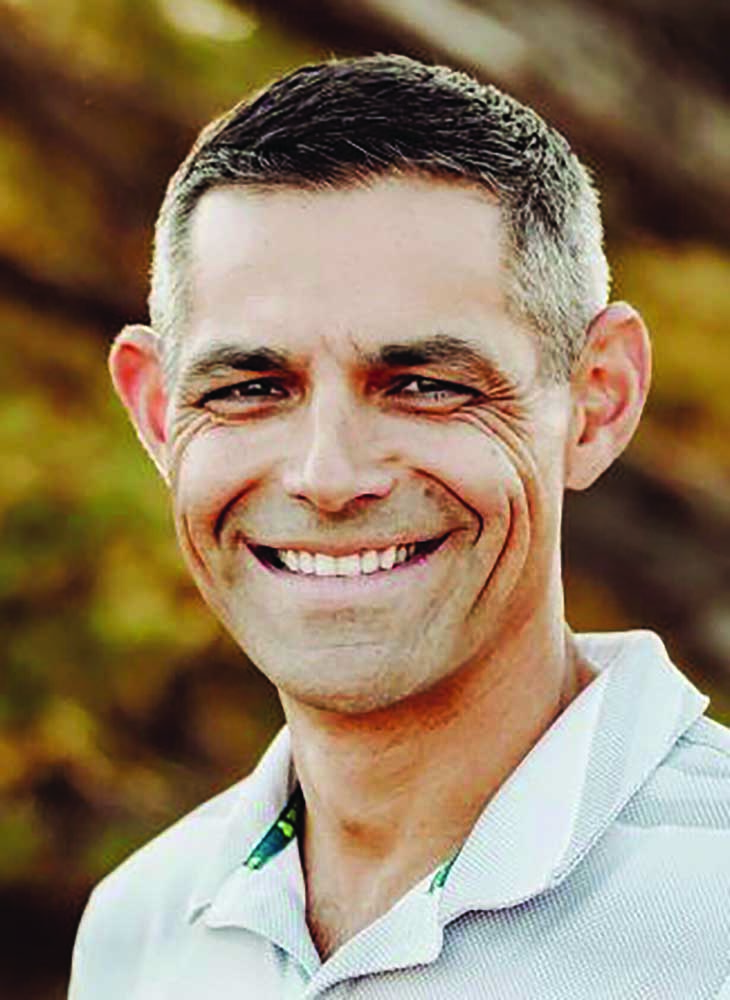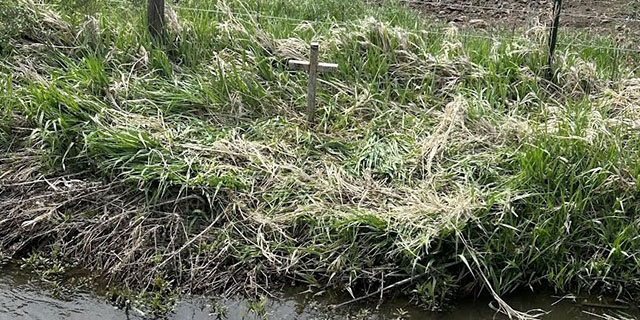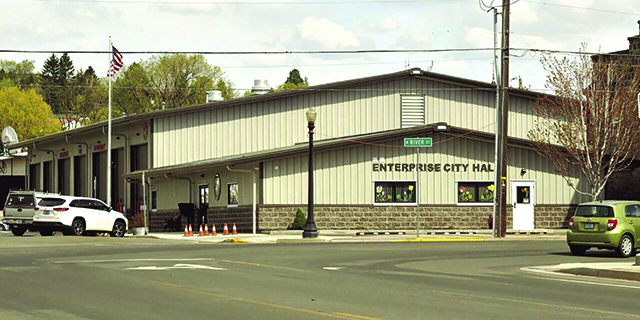Greater Idaho measure clings to seven-vote lead
Published 10:00 am Thursday, May 18, 2023

- McCaw
ENTERPRISE — Members of the Greater Idaho movement are confident a slim lead in a Wallowa County ballot measure will hold up — and the group is making plans for its next steps to move Eastern Oregon into Idaho.
But as of 9 a.m. Sunday, May 21, Ballot Measure 32-007 led by only seven votes (1,742 “yes” votes to 1,735 “no” votes).
The ballot measure directs the county Board of Commissioners to meet twice a year “to discuss promoting the interest of Wallowa County to relocate state borders, and to prepare the county to become part of Idaho.”
County Clerk Sandy Lathrop was busy Wednesday sending out “challenged” ballots — ones on which the signatures could not be matched to those on file for voters. The voters have two weeks from election night to properly sign and return them. Two of those ballots were from voters who use wheelchairs and wouldn’t be able to visit the county elections office, The Oregonian/OregonLive reported, and so Lathrop planned to visit their homes on Friday to retrieve those ballots.
There also are ballots that may still be in the mail that were postmarked by 8 p.m. Election Day. Lathrop will be required to count them with the total.
She said she has no idea how many of either the challenged or the late-mailed ballots to expect. In November 2022, she estimated receiving about 28 late ballots.
It’s possible that a recount may be in the offing: State law says that a margin of one-fifth of 1% of less triggers a recount. The seven-vote margin appears to be one-fifth of 1%, or 0.2%.
The Greater Idaho measure helped to push countywide voter turnout to what could be a record for an off-year election. The turnout in Wallowa County was 55.4%, twice the turnout statewide, and easily the best mark in any of Oregon’s counties.
There were 3,476 ballots counted from 6,376 active registered voters.
This is the second time a Greater Idaho measure has been put to Wallowa County voters. In 2020, a similar measure failed 2,531 to 2,485 — a difference of just 46 votes.
Matt McCaw, spokesman for the Greater Idaho movement, said the movement isn’t done with its work.
He said the judge of the Crook County Court told him that county will put an advisory question on its next ballot.
“That will leave us with only Gilliam and Umatilla counties having not voted on our measures” in Eastern Oregon, McCaw said.
“At this point, we have proven that the people of Eastern Oregon want their elected leaders to pursue moving the border as a long-term solution to the urban/rural divide in our state,” McCaw said.
He noted that the Idaho House of Representatives approved a bill supporting the measure in February, but the Idaho Senate had taken no action. Idaho’s Legislature adjourned for the year April 6. A similar measure, Senate Joint Memorial 2, was filed in the Oregon Legislature in the 2023 session. The measure called for discussions between the state’s two legislatures on the issue, but it continues to languish in the Senate Committee on Rules.
McCaw said his movement is continuing to make the case for moving the border to the Oregon Legislature.
“We are lobbying the Oregon Legislature and governor to ask them to consider the benefits to Western Oregon of allowing Eastern Oregon to choose which state to join,” he said.
The Wallowa County ballot measure calls for the county Board of Commissioners to hold discussions on aligning Wallowa County with Idaho in August and February of each year. Board Chairman John Hillock said he’s still uncertain what the commissioners’ first discussion session in August will look like — or even where it will take place. He said the commissioners may hold it at Cloverleaf Hall if it appears it will generate a large turnout.
“If more people show up, we might do it at a bigger venue,” he said. “We don’t know that right now.”
He’s also considering talking with commissioners in other counties where such meetings have taken place. He said Grant County is a likely candidate to gain some insight, as its commissioners have asked its state lawmakers to bring up the issue in the Legislature.
Commissioner Todd Nash said he hopes to talk to other commissioners from around the state who have participated in meetings such as those mandated by the ballot measure. He hopes to learn what issues they have dealt with and how their meetings have gone.
He noted that as chairman, Hillock will direct the first such meeting. Nash said the ballot measure is quite clear about what the commissioners are to do — they’re to discuss what it will take to make the county part of Idaho.
“For me, if I had my druthers, we’d start to look at what the positive and the negative things are about becoming a part of Idaho,” Nash said.
He also said he hopes to draw the public into the discussion.
“I think this is really geared toward public participation as much as anything,” he said.
Eventually, through thorough discussion and consideration of what a border move would look like, it may be appropriate to seek a popular vote on where Wallowa County residents actually want to become Idahoans.
“That would be a pertinent point,” Nash said.
Hillock agreed, saying the majority who approved the measure this month want something done.
“A majority of them are at least considering that as an option,” he said.
On its website, the Greater Idaho movement cites a study that says residents in Western Oregon would prefer to have rural, conservative Eastern Oregon attach itself to Idaho and stop being a drain on the resources and politics of a blue state. Nash said in asking around in Western Oregon, he hasn’t come across such opinions.
“I just haven’t seen it,” he said.
But the two commissioners (the third commissioner, Susan Roberts, was out of state) said they would follow voters’ directions and move ahead with the discussion.
“I’m taking a neutral position and doing what the people want within the law,” Hillock said.





